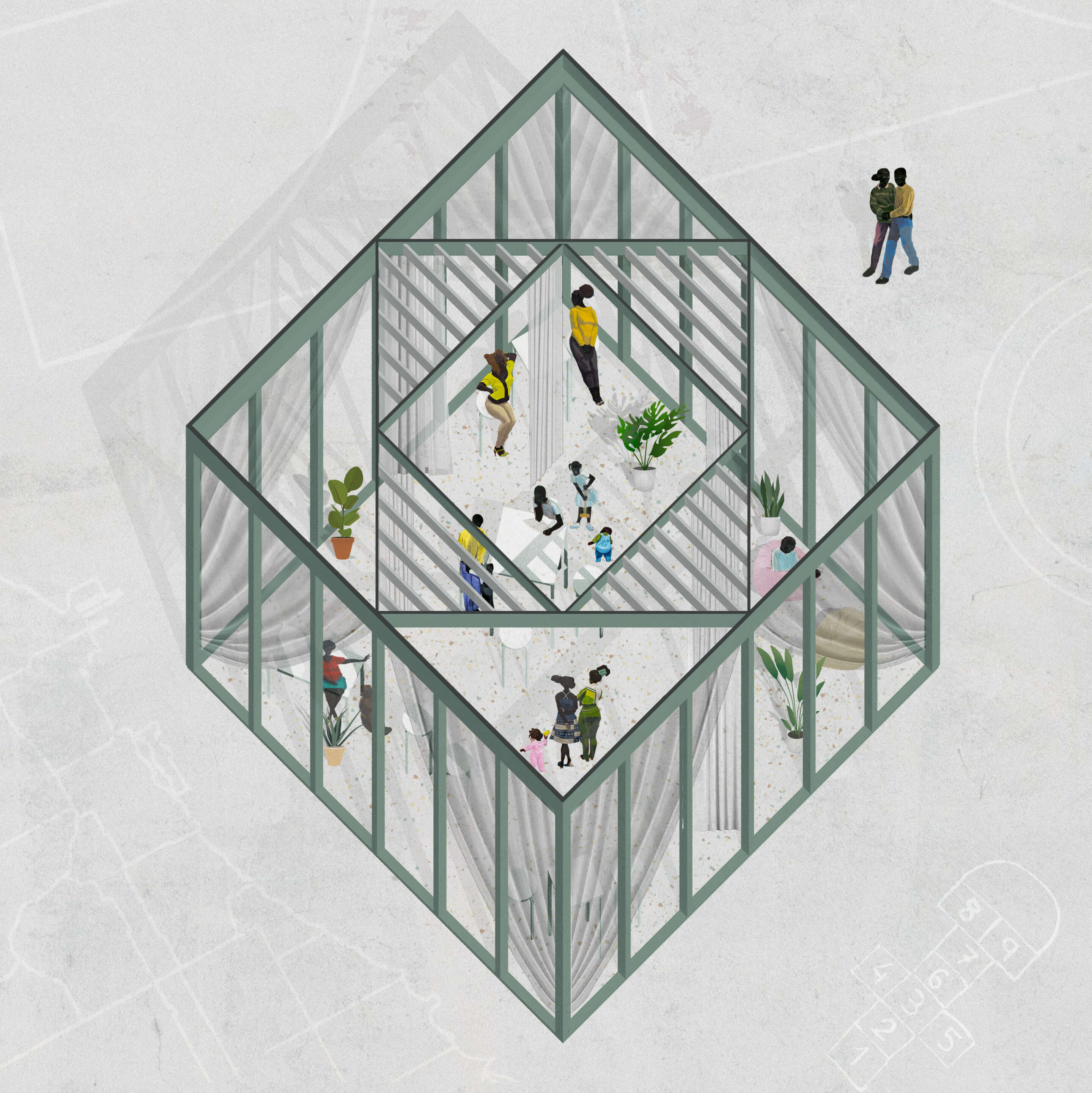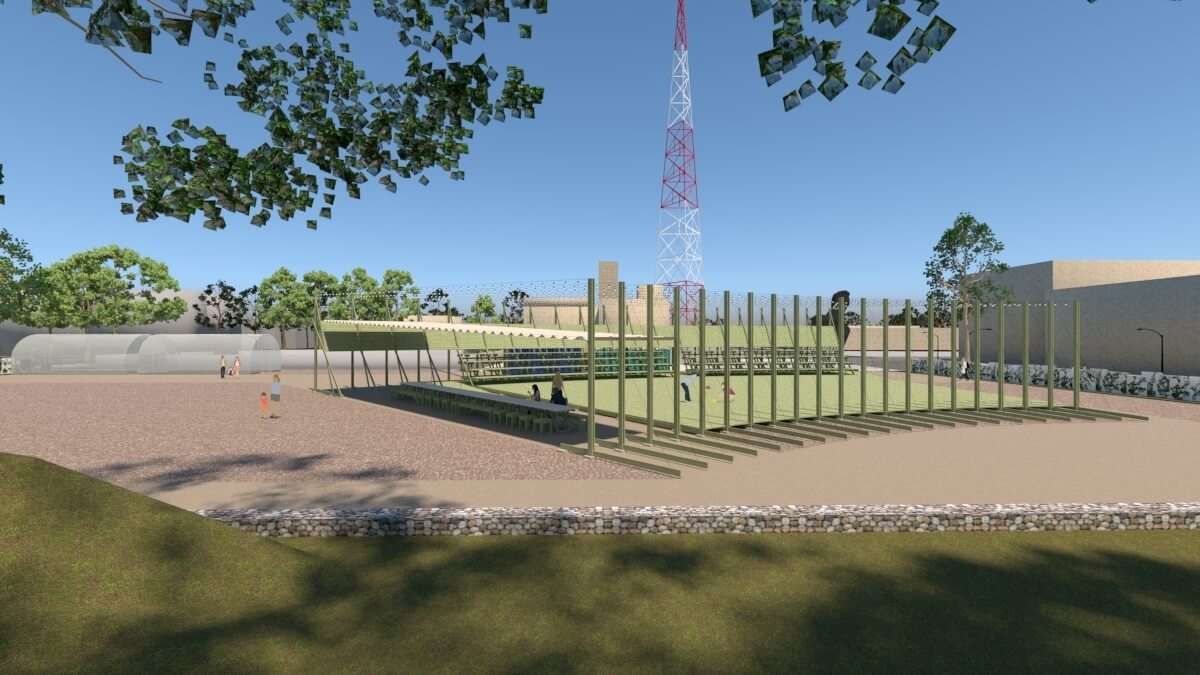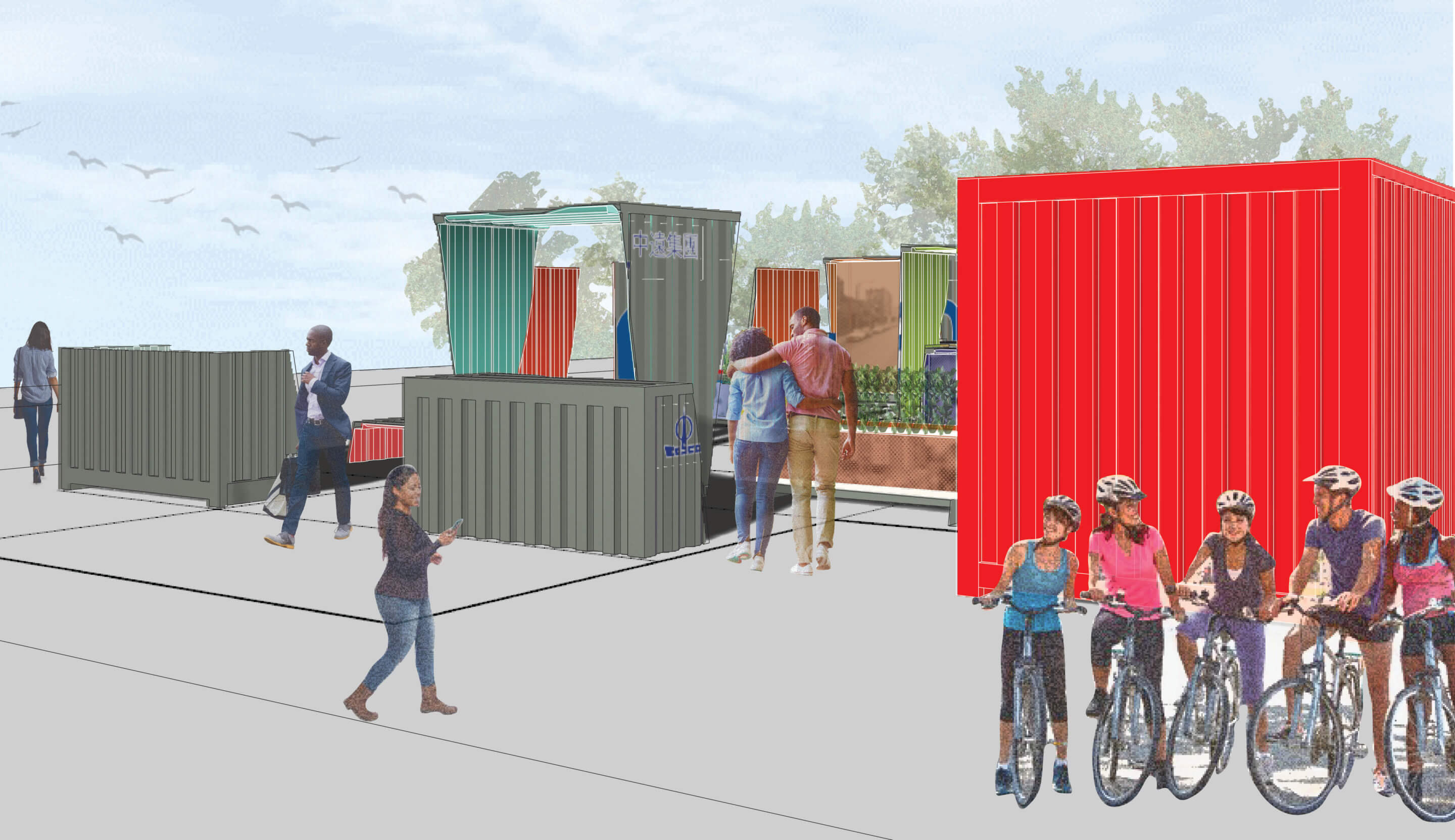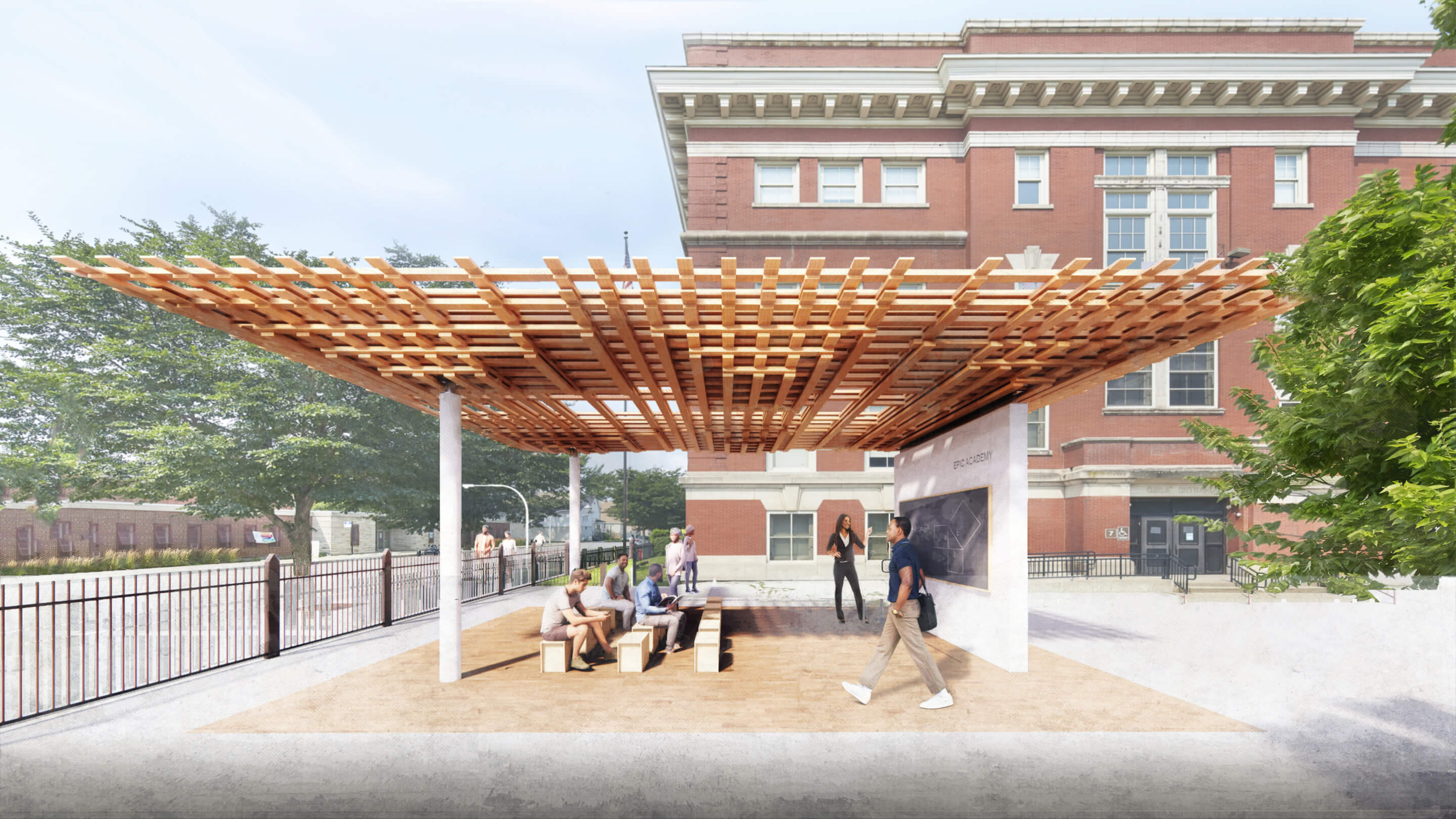The Chicago Architecture Biennial opens to the public next Friday, September 17, and, unlike past iterations of the international exhibition that were predominantly centralized around a single indoor venue (the Chicago Cultural Center), the forthcoming fourth edition, The Available City, is notably untethered.
The “site” of the 2021 Chicago Architecture Biennial is, true to its name, the city itself with its headlining installations—murals, pavilions, play structures, and community gathering spaces aplenty—taking root in eight different South and West Side neighborhoods. Extricating itself from the confines of the Loop, The Available City extends out and away from the historic erstwhile Biennial hub and into these often overlooked, lesser-explored neighborhoods that will host site-specific architectural commissions along with exhibitions, workshops, tours, performances, and more over the Biennial’s busy three-month run. True to our times, this multi-location and largely outdoors edition of the Biennial also boasts a robust digital component. (Not to worry fans of the Cultural Center, the 128-year-old Loop landmark will still play a role in the 2021 Biennial, albeit a minimized one, as an orientation and information center.)
Over 80 contributors hailing from 18 countries are taking part in The Available City, all invited to respond to an urban design framework that explores what’s possible when community groups and designers come together to realize vibrant collective spaces born from city-owned vacant lots in predominately Black and Brown neighborhoods—and there are a multitude of them, over 10,000 to be exact, mostly concentrated on the South and West Side.

“Exploring the potential of The Available City has been a central focus for me for over a decade, and it is a fantastic opportunity to explore its ideas with global and local architects, designers, thinkers, and community leaders within the Biennial’s platform,” said David Brown, the University of Illinois Chicago-based designer, researcher, and educator based who is serving as artistic director of the 2021 Chicago Architecture Biennial. “When the Biennial opens, our work is really just beginning — the Biennial is an open conversation on possibility, and I am excited to see what ideas, collaborations, and partnerships emerge from this forum.”
This all said, navigating this year’s geographically expansive, pandemic era exhibition may take more pre-planning than biennials past. Below is a non-exhaustive rundown featuring just a few of the highlights for those who plan on traversing The Available City in the coming weeks:
Site-specific architectural projects
Fifteen total commissioned installations will be on view during the 2021 Chicago Architecture Biennial, all of them located on both private and public lots in the North Lawndale, Bronzeville, Woodlawn, Englewood, Pilsen, and South Loop neighborhoods. They include, among others:
- The Center Won’t Hold, a flexible outdoor meeting space conceived by The Open Workshop on the grounds of Perkins&Will’s modernist Overton Elementary School in Bronzeville, now a business and technology incubator, that “will serve various different purposes and accommodate various styles of gatherings, signifying the evolving practices and values of commoning.”
- Matri-Archi(tecture)’s Reflecting Our (Global) South Side is another multifaceted venue for community gatherings, this one in Woodlawn at a city lot on 63rd and University. It is envisioned as “a circular outdoor meeting space with canopies and seating to provides shade and shelter for congregation, referencing the rich value of radial community planning, historically designed by communities in Sub-Saharan Africa.”
- At the Westside Association for Community Action’s Bell Park, Biennial-goers will find two different projects: a central installation in the form of a “climbable, walkable, and, durable play structure” by Studio Barnes in collaboration with Shawhin Roudbari and MAS Context that riffs off of block party-popular inflatable bounce houses; and Cover the Grid, Outpost Office’s architectural-scale urban painting on the ground of the playlot, produced with GPS-guided robots.

- The Cover the Grid project will also be realized on the grassy lawn at the 1.1-acre El Paseo Community Garden in Pilsen, where another project, Studio Ossidiana’s The Garden Table, was created as a permanent modular installation that functions as “part kitchen, part game, part stage.”
- At the YMEN Bike Box site in North Lawndale, sekou cooke STUDIO’s Grids + Griots “forms a new space for interaction” that integrates “elements present on the site and nearby (including raised planters, bicycle storage, paved walks, gathering areas, informal retail booths, and seating) into spaces of interaction created using parts of a 40-foot-long shipping container.”
- Also incorporating containers will be Atelier Bow-Wow’s Englewood’s Commons at Englewood Village Plaza. The two-phase project, the first of which will be on view during the Biennial, involves the creation of container-based office and storage facilities connected by a vaulted canopy; a large communal table that will anchor the site is envisioned as a “space to bring people together, a space for healing, nurturing and nutrition and to reinforce and teach ways that community wealth is rooted in its health.” Next year, an amphitheater will join the existing elements at the project, which was co-created by Grow Greater Englewood.

Exhibitions
The Available City features two core exhibitions. One will be held at the Graham Foundation’s Gold Coast headquarters and the other at an unused storefront space at the Bronzeville Artist Lofts. The former features projects by Christophe Hutin Architecture, Drawing Architecture Studio, Departamento del Distrito, El Cielo, Enlace Arquitectura + Ciudad Laboratorio, and fala, while works from Plan Comun, RIFF Studio, SHAU, and Urban American City will be on view at the latter venue.
Partner Programing
Over 100 civic, educational, and cultural partners will host a range of programming—exhibitions, performances, lectures, installations, and more—to coincide with the Biennial’s central programming. Just a few highlights include the debut of a migratory bird conservation-themed mini-golf course at Lincoln Park Zoo; the unveiling of a robot-fabricated outdoor classroom/pavilion designed by SOM in partnership with the University of Michigan’s Taubman College of Architecture and Urban Planning, and the opening of the inaugural exhibition at Studio Gang’s new Wicker Park gallery space.

Activation Weekends, essay-based projects, and virtual programming
Following the Biennial’s kick-off weekend and running through October 31, will be a series of dedicated Activation Weekends featuring talks, workshops, screenings, performances, and more held at and/or highlighting different neighborhood installation sites. After October 31, programs will be held in a hybrid format, both virtually and in-person in accordance with the CDC’s latest COVID-19 safety guidelines. A weekly virtual program series of conversations titled InDialogue will complement site-based neighborhood programming.
Additionally, two essay-based projects from Available City contributors will be published on the third Thursday of every month on the Biennial website throughout the run of the exhibition. These contributors are: Ana Miljački, Jill Desimini, studioAPT, Elleza Kelley, Stefan Gruber, Alexander Eisenschmidt, Rayna Razmilic, and Maite Borjabad.
AN will be on the ground in Chicago for the opening of The Available City–keep an eye out for our observations. The 2021 Chicago Architecture Biennial, which, as mentioned, is free and open to the public, concludes on December 18.











